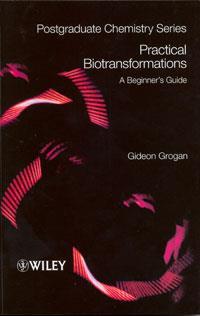The latest volume in a series primarily aimed at postgraduates and researchers published by Wiley
Practical biotransformations: A beginner’s guide
Gideon Grogan
Chichester, UK: Wiley-Blackwell 2009 | 331 pp | ?34.95 (SB)
ISBN 9781405171250
Reviewed by Andrew Carnell

This is the latest volume in a series primarily aimed at postgraduates and researchers published by Wiley. It will appeal to synthetic organic chemists wanting to become active in, or engage with, the use of enzymes and microorganisms for carrying out biotransformations.
It is primarily a laboratory manual with many useful and easy to follow experimental protocols, including lists of reagents, equipment and stepwise procedures to follow. However, it delivers much more, with appropriate levels of detail in each section allowing the reader to appreciate the fundamentals behind this interdisciplinary practice.
Very little prior knowledge of biochemistry, microbiology or molecular biology is assumed. The reader is led through sections of increasing degrees of specialisation from using commercially available enzymes (suppliers are given) or growing and isolating your own, to gene cloning and directed evolution.
The book could work in two ways: in an appropriate environment one could get quite a long way towards setting up a working biotransformations laboratory; alternatively the book would facilitate collaboration with life scientists by demystifying terminology and methodologies. There is an invaluable section explaining how to search gene and protein sequences online with some guided examples. This would allow the uninitiated to easily identify possible alternative sources of biocatalysts given a sequence of a known enzyme, which may have shown promise for a new reaction.
This book is easy to read and well organised and can be dipped in and out of, depending on your level of experience in different areas. Appendices on amino acid and nucleic acid base structures, the genetic code, buffers and standard microbial growth media and other practical resources are very useful. Well selected references are given for further reading at the end of each chapter. Overall an excellent, interesting and user-friendly manual/textbook.












No comments yet